NEWSLETTER
BE FIRST IN LINE FOR OUR NEXT RELEASE.
© 2025 TIPSTER. ALL RIGHTS RESERVED.
NEWSLETTER
BE FIRST IN LINE FOR OUR NEXT RELEASE.
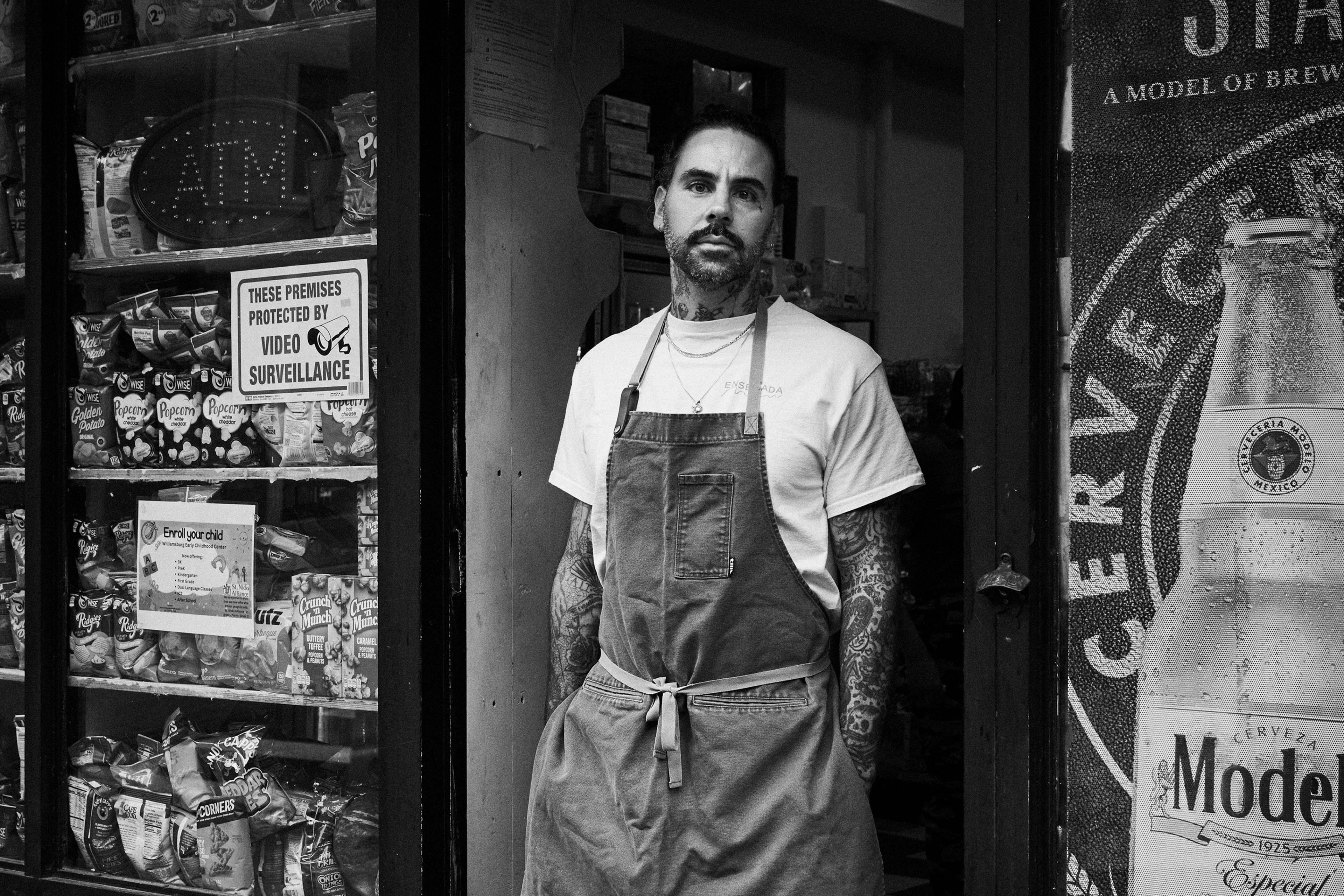
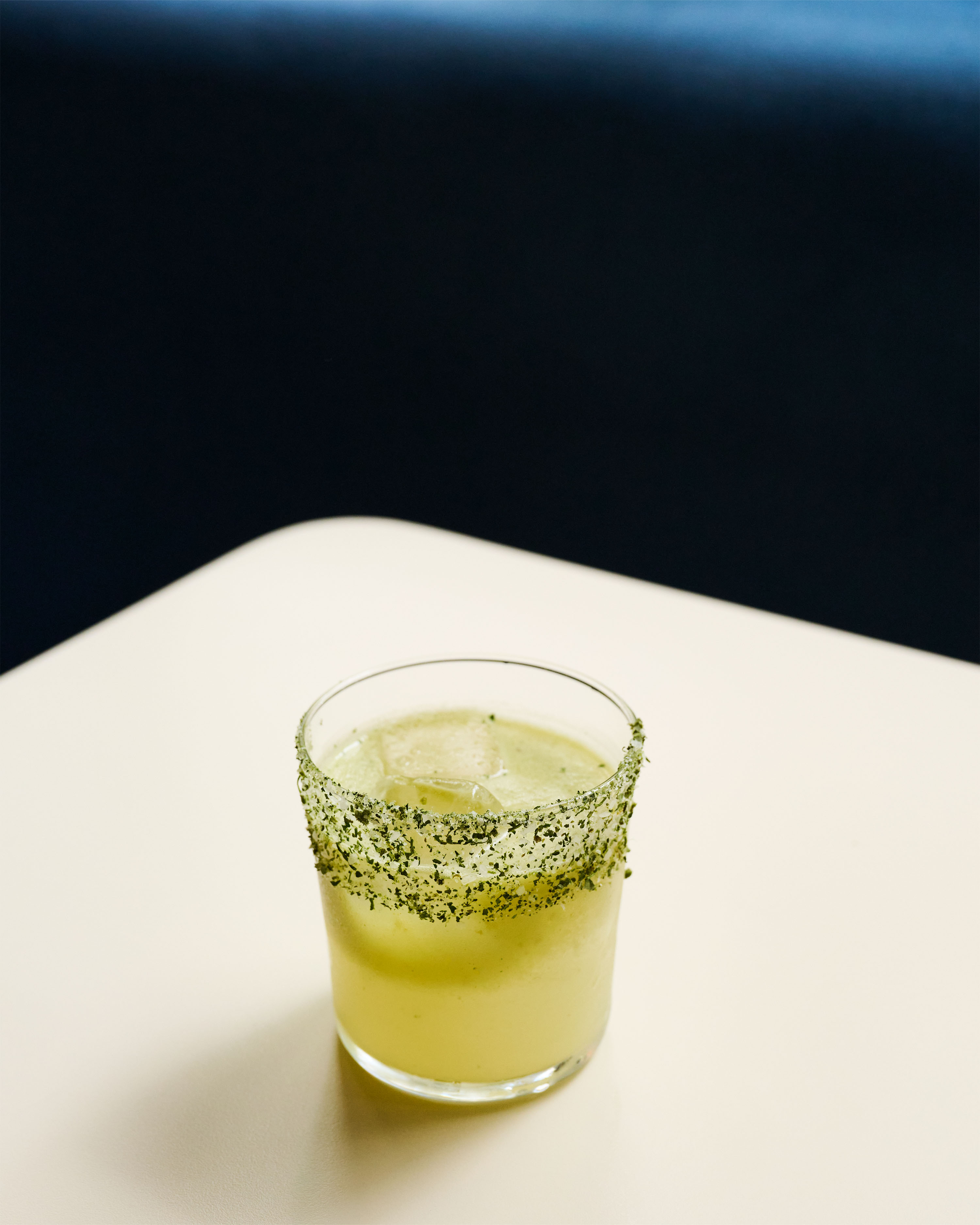
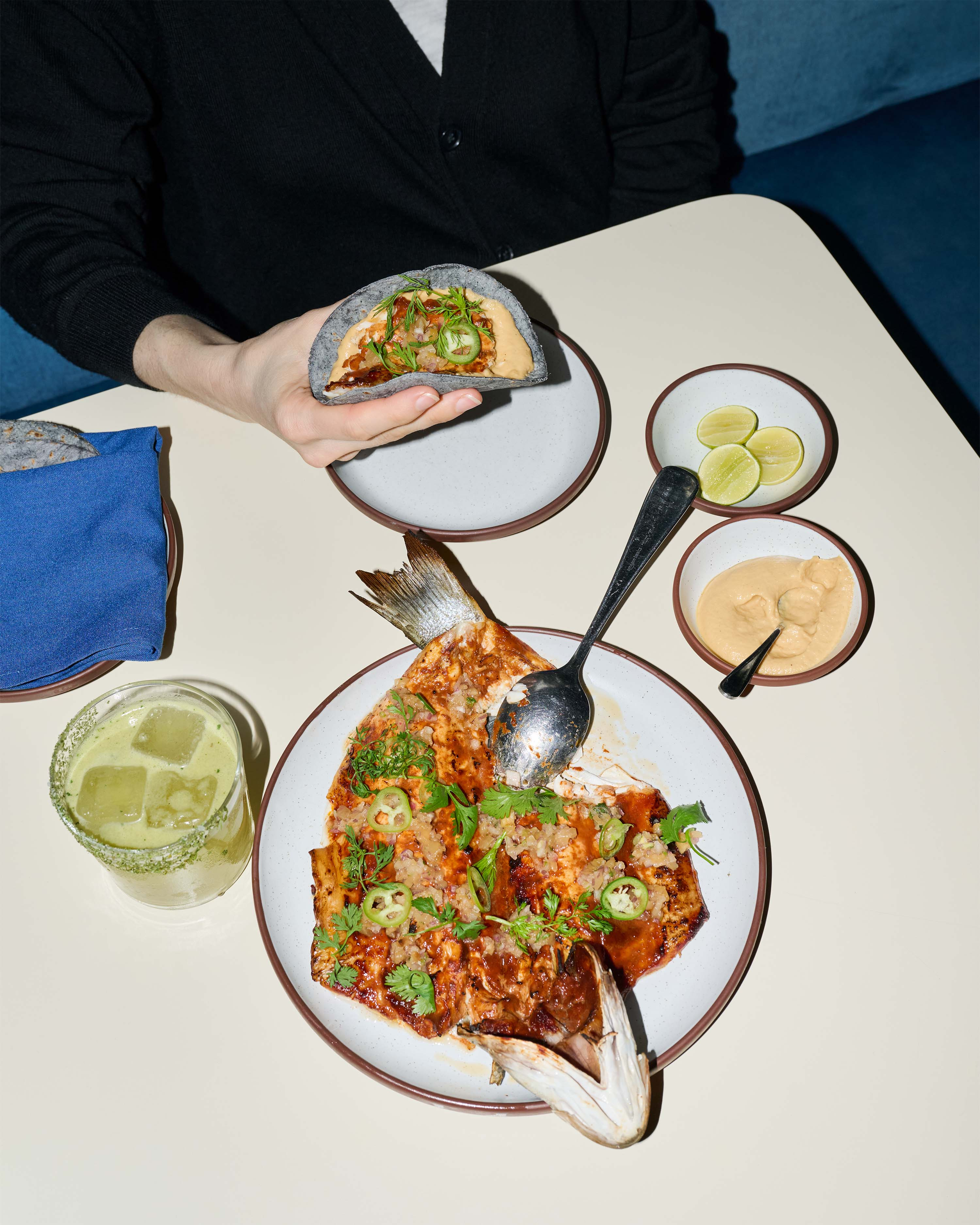
Words by Marcelo Jaimes Lukes | Photography by Sacha Maric
Chef Luis Herrera works in a kitchen smaller than a parking spot. He steps side to side like a boxer in close quarters, his tattooed hands moving smoothly in practiced arcs. As he pauses to drizzle scarlet chili oil on a vibrant aguachile, the gothic lettering on his wrists becomes legible: BUEN PROVECHO. Bon appétit
Herrera steps back to examine the three aguachiles that glow on the stainless steel counter like a psychedelic stoplight: green, yellow, and black. “There’s so much more than taco trucks and margaritas,” he says to me as we stand shoulder to shoulder in the Williamsburg restaurant. His wry smile indicates he’s about to share something incendiary. “New Yorkers want real Mexican food now.”
The city’s curiosity for new flavors fuels Herrera’s Lilliputian kitchen at Ensenada. Named for the vibrant port city in Baja California, the marisqueria invites diners to take a dip in the Pacific.
“New Yorkers are adventurous diners,” Herrera says, smiling again. “They’ll research dishes at their seats, and then order something they can’t pronounce.” As dishes hit the table, diners raise their eyebrows at the color palette in front of them. “People say it’s ‘sexy food,’” Herrera chuckles. “I guess that’s because there’s some mystery to it.”
Sexy indeed. Herrera’s pescado del día is splayed open almost suggestively, moistened with an al pastor adobo and dripping with a generous serving of roasted pineapple relish. Guests perspire as they indulge in the aguachile negro, cured with enough habanero to raise a heart rate. A single sip of the El Casino cocktail is a spirituous aphrodisiac.
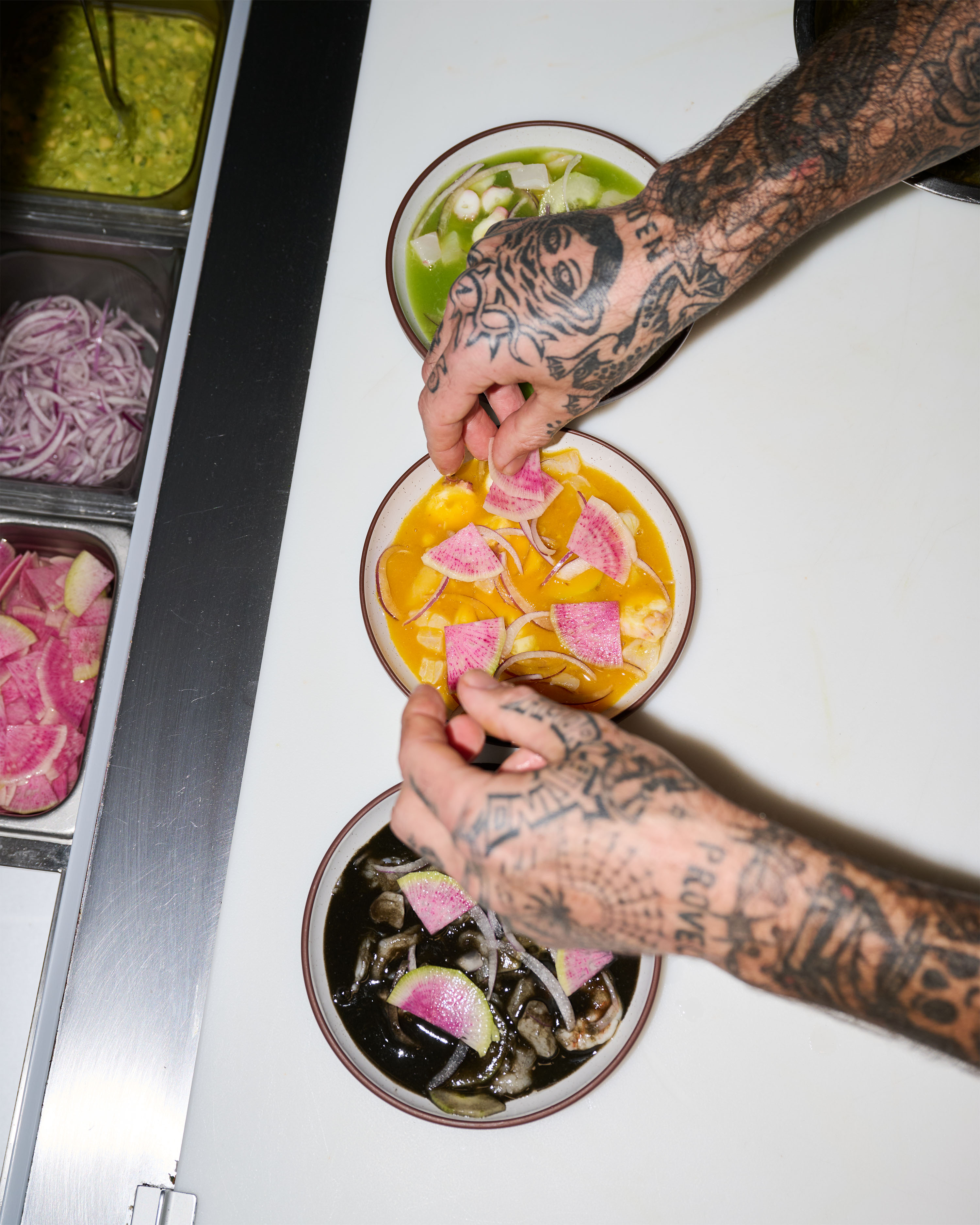
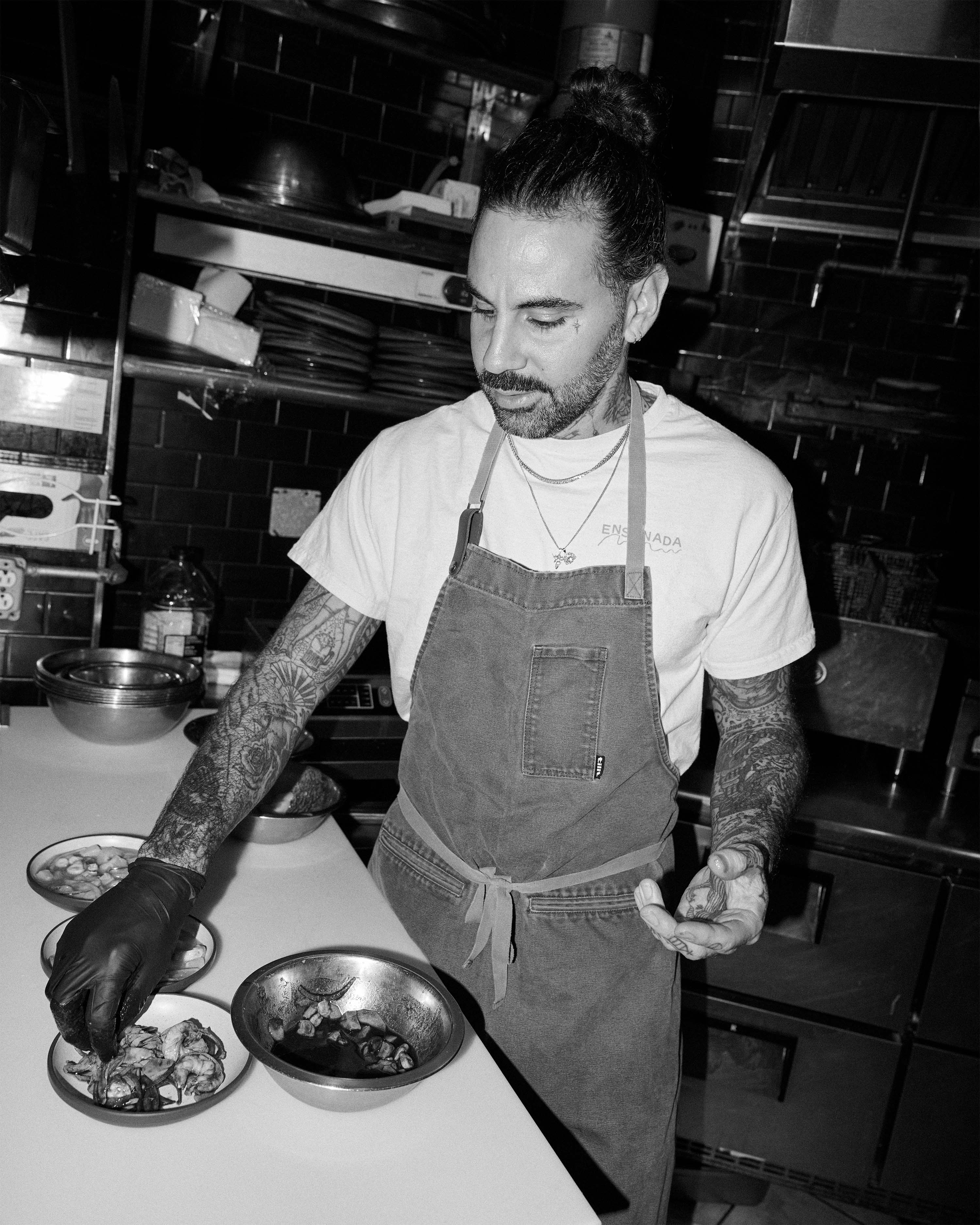
“New Yorkers are adventurous diners. They’ll research dishes at their seats, and then order something they can’t pronounce.”
A native of Caracas, Herrera originally aspired to showcase Venezuelan cooking. But years working at Enrique Olvera’s famed Cosme changed his trajectory. Herrera recalls it as a sort of culinary boot camp. He started as a prep cook, grinding nixtamal and pressing tortillas, and worked his way up to sous chef in the coordinated chaos of Olvera’s kitchen. “It was everything from scratch,” he says wistfully. “A beautiful madness.”
Herrera insists that the kitchen at Cosme didn’t just mark a turning point in his own career—it shifted New York’s entire understanding of Mexican cuisine. “Cosme set the ground for so much here. No one was making Mexican food like that.” The restaurant set a precedent in the city, opening doors for chefs like Herrera to step through. It also provided Herrera with shocks of inspiration, the aforementioned pineapple relish among them.
Originally, he planned on assisting owner Bryce David with Ensenada’s opening, but he decided to stay on, guiding the restaurant through its rise as a culinary destination in North Brooklyn.
While Ensenada is a decidedly Mexican mariscos mecca, Herrera continues to add in touches of Venezuelan cuisine—an aji dulce here, a plátano there. As we discuss Latin American cuisine, our conversation takes a detour. We debate the supremacy of Venezuelan versus Colombian arepas. Some disagreements are too political to share with the public.
“Everything is always changing. Brooklyn is in, Manhattan’s out. Then Brooklyn’s out, Manhattan’s in. What matters is that people stay curious.”
TORTILLAS AND TOSTADAS
In 2023, Ensenada was named one of Bon Appétit’s best restaurants of the year. A year later, Herrera was a semifinalist for the prestigious James Beard Foundation award for Best Chef in New York. He acknowledges the accolades with humility, crediting the laid-back and flavor-forward approach of his dedicated team. “We’re trying to make casual food exceptional.”
Earlier this year, Ensenada spread to Miami. Herrera brought the same menu from Brooklyn, though he jokes that the transition was a bit of a culture shock. “It didn’t work immediately,” he admits. “We adjusted. That’s business.” In New York, he would introduce unfamiliar items on the menu and watch diners’ eyes widen with anticipation. In Miami, a diner asked, “Why is the menu in Spanish? This is America.” One early chef didn’t know the difference between a tortilla and a tostada. “That wasn’t a great fit,” Herrera jokes. The menu has gotten simpler: “We made it foolproof,” he explains. “In Florida, people are a bit more resistant to unfamiliar menus. They do love the food, though.” New Yorkers, consider yourselves superior.
Yet Gotham’s perpetual interest is a double-edged sword. Herrera comments that the city’s geographic and cultural spotlight shifts regularly, swinging like a pendulum between boroughs, cuisines, and levels of perceived refinement. While the most palpable evolution may be eschewing the “exhausting” tweezer foods of the mid-2010s, the city’s culinary center is back across the Williamsburg Bridge.
“Listen,” he says as he draws closer in a hushed tone. “Everything is always changing. One day, Brooklyn is in, and Manhattan’s out. Then Brooklyn’s out, Manhattan’s in.” Herrera seems unfazed. “What matters is that people stay curious. That’s what New York is about.”
ENSENADA
168 Borinquen Pl,
Brooklyn, NY 11211